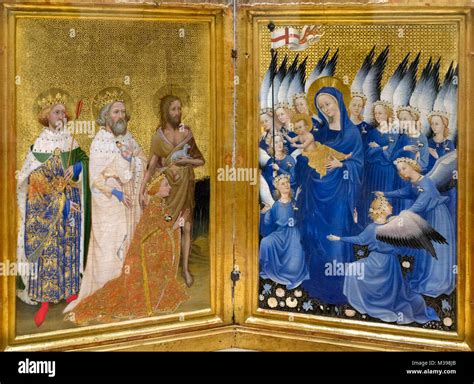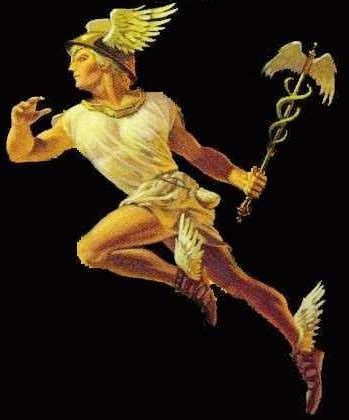hermes warburg | Rhizomatic Mnemosyne: Warburg, Serres, and the Atlas of Hermes hermes warburg This essay aims to examine Aby Warburg’s Mnemosyne Atlas according to two conceptual perspectives that seem deeply interwoven, Deleuze and Guattari’s notion of rhizome and . Plastic welder with 2 heads ZS 720 LV Elumatec brand. used. Manufacturer: Elumatec; Elumatec ZS 720 LV 2-head plastic welding machine. Fixed L-head (90°). Variable L-head (30° - 180°). Continuously adjustable stops allow welding at any angle from 30° to 180°. Heated weld bead limiting sheet, con.
0 · The Wilton
1 · The Reappearance of Hermes in Fifteenth
2 · The Legend of the Three Hermes and Abū Maʿshar's Kitāb al
3 · Rhizomatic Mnemosyne: Warburg, Serres, and the Atlas of Hermes
4 · Rhizomatic Mnemosyne: Warburg, Serres, and the Atlas of
5 · Resurrecting the Ram
6 · Kriophoros
7 · Hermes and Plato
8 · Between Hermes and Mnemosyne: Jung and Warburg
9 · "Rhizomatic Mnemosyne" by María del Carmen Molina Barea
US $21.96. Condition: New. Quantity: 5 available. Buy It Now. Add to cart. Add to watchlist. Breathe easy. Returns accepted. Shipping: FreeStandard Shipping. See details. Located .
A first-century Hermes Kriophoros, likely a Roman or Hellenic copy of the archaic Greek ‘ram-bearer,’ stood in the entrance hall of the Warburg Institute from 1958 to 2007. Hermes, known .This essay aims to examine Aby Warburg’s Mnemosyne Atlas according to two conceptual perspectives that seem deeply interwoven, Deleuze and Guattari’s notion of rhizome and .This essay aims to examine Aby Warburg’s Mnemosyne Atlas according to two conceptual perspectives that seem deeply interwoven, Deleuze and Guattari’s notion of rhizome and .In ancient Greek religion, kriophoros (Greek: κριοφόρος) or criophorus, the "ram-bearer," is a figure of Hermes that commemorates the solemn sacrifice of a ram; thus, one of the god's epithets is Hermes Kriophoros.
Dant Gabriel Rossetti, “Mnemosyne”. One such son of Hermes, possessed by ancestral memory, was C.G. Jung, another – Aby Warburg. The latter – Jewish German art .From 1957 to 2007, the entrance to the Warburg Institute, Britain’s most important centre of Renaissance studies, was watched over by a curious guardian: a sculpture of Hermes .
1] This essay aims to examine Aby Warburg’s Mnemosyne Atlas according to two conceptual perspectives that seem deeply interwoven, Deleuze and Guattari’s notion of rhizome and .
Since the first half of the fifteenth century, other humanists had shown a particular interest in Hermetic sources concerning the nature of God, which was linked to the revived study of the .In 1968 the Warburg Institute published a full-scale study of the Kitāb al-Ulūf of Abū Maʿshar Jaʿfar ibn Muḥammad al-Balkhī. 1 In this strange treatise of astrological history the legend of .the dazzling splendours of visible art to pale away. in Plato's soul, there to give place to a diviner. dream. This man showed him the inferiority of beauty. and glory as he had conceived them .A first-century Hermes Kriophoros, likely a Roman or Hellenic copy of the archaic Greek ‘ram-bearer,’ stood in the entrance hall of the Warburg Institute from 1958 to 2007. Hermes, known as Mercury in Roman mythology, served as the messenger of Zeus.
This essay aims to examine Aby Warburg’s Mnemosyne Atlas according to two conceptual perspectives that seem deeply interwoven, Deleuze and Guattari’s notion of rhizome and Michel Serres’s metaphor on Hermes.This essay aims to examine Aby Warburg’s Mnemosyne Atlas according to two conceptual perspectives that seem deeply interwoven, Deleuze and Guattari’s notion of rhizome and Michel Serres’s metaphor on Hermes.In ancient Greek religion, kriophoros (Greek: κριοφόρος) or criophorus, the "ram-bearer," is a figure of Hermes that commemorates the solemn sacrifice of a ram; thus, one of the god's epithets is Hermes Kriophoros. Dant Gabriel Rossetti, “Mnemosyne”. One such son of Hermes, possessed by ancestral memory, was C.G. Jung, another – Aby Warburg. The latter – Jewish German art historian, born in 1866 (nine years before Jung) – had a lot in common with the Swiss psychiatrist, though the two never met.
From 1957 to 2007, the entrance to the Warburg Institute, Britain’s most important centre of Renaissance studies, was watched over by a curious guardian: a sculpture of Hermes Kriophoros (ram-bearer) borrowed from Wilton House by then-director Gertrud Bing.
1] This essay aims to examine Aby Warburg’s Mnemosyne Atlas according to two conceptual perspectives that seem deeply interwoven, Deleuze and Guattari’s notion of rhizome and Michel Serres’s metaphor on Hermes.Since the first half of the fifteenth century, other humanists had shown a particular interest in Hermetic sources concerning the nature of God, which was linked to the revived study of the Church Fathers, above all Lactantius.In 1968 the Warburg Institute published a full-scale study of the Kitāb al-Ulūf of Abū Maʿshar Jaʿfar ibn Muḥammad al-Balkhī. 1 In this strange treatise of astrological history the legend of the three Hermes appears to have been first formulated: the first all-wise Hermes lived in Egypt before the flood, and is identical with Enoch; the .the dazzling splendours of visible art to pale away. in Plato's soul, there to give place to a diviner. dream. This man showed him the inferiority of beauty. and glory as he had conceived them hitherto, in. comparison with the beauty and glory of the .
A first-century Hermes Kriophoros, likely a Roman or Hellenic copy of the archaic Greek ‘ram-bearer,’ stood in the entrance hall of the Warburg Institute from 1958 to 2007. Hermes, known as Mercury in Roman mythology, served as the messenger of Zeus.This essay aims to examine Aby Warburg’s Mnemosyne Atlas according to two conceptual perspectives that seem deeply interwoven, Deleuze and Guattari’s notion of rhizome and Michel Serres’s metaphor on Hermes.This essay aims to examine Aby Warburg’s Mnemosyne Atlas according to two conceptual perspectives that seem deeply interwoven, Deleuze and Guattari’s notion of rhizome and Michel Serres’s metaphor on Hermes.In ancient Greek religion, kriophoros (Greek: κριοφόρος) or criophorus, the "ram-bearer," is a figure of Hermes that commemorates the solemn sacrifice of a ram; thus, one of the god's epithets is Hermes Kriophoros.
Dant Gabriel Rossetti, “Mnemosyne”. One such son of Hermes, possessed by ancestral memory, was C.G. Jung, another – Aby Warburg. The latter – Jewish German art historian, born in 1866 (nine years before Jung) – had a lot in common with the Swiss psychiatrist, though the two never met.From 1957 to 2007, the entrance to the Warburg Institute, Britain’s most important centre of Renaissance studies, was watched over by a curious guardian: a sculpture of Hermes Kriophoros (ram-bearer) borrowed from Wilton House by then-director Gertrud Bing.
1] This essay aims to examine Aby Warburg’s Mnemosyne Atlas according to two conceptual perspectives that seem deeply interwoven, Deleuze and Guattari’s notion of rhizome and Michel Serres’s metaphor on Hermes.
Since the first half of the fifteenth century, other humanists had shown a particular interest in Hermetic sources concerning the nature of God, which was linked to the revived study of the Church Fathers, above all Lactantius.
In 1968 the Warburg Institute published a full-scale study of the Kitāb al-Ulūf of Abū Maʿshar Jaʿfar ibn Muḥammad al-Balkhī. 1 In this strange treatise of astrological history the legend of the three Hermes appears to have been first formulated: the first all-wise Hermes lived in Egypt before the flood, and is identical with Enoch; the .
givenchy pullover fake erkennen

The Wilton
The Reappearance of Hermes in Fifteenth

LEMONA electronics noliktavā ir vairāk nekā 13 000 zīmolu preču, kā arī vairāk nekā 5 000 000 preces varam piegādāt pēc pasūtījuma. Profesionāli pakalpojumi. LEMONA electronics darbinieki piemeklēs jūsu vajadzībām piemērotāko preci, kā .
hermes warburg|Rhizomatic Mnemosyne: Warburg, Serres, and the Atlas of Hermes


























